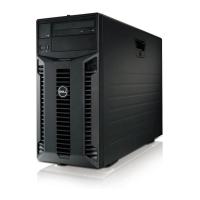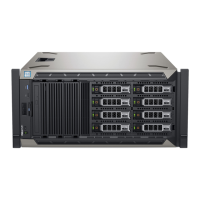Entering System Setup
1. Turn on or restart your system.
2. Press <F2>.
If your operating system begins to load before you press <F2>, allow the system to finish booting, and then restart
your system and try again.
Using The System Setup Navigation Keys
Key Description
Up arrow Moves to the previous field.
Down arrow Moves to the next field.
<Enter> Allows you to type in a value in the selected field (if applicable) or follow the link in the field.
Spacebar Expands or collapses a drop-down list, if applicable.
<Tab> Moves to the next focus area.
NOTE: For the standard graphics browser only.
<Esc> Moves to the previous page till you view the main screen. Pressing <Esc> in the main screen
exits the Boot Manager and proceeds with system boot.
NOTE: For most of the options, any changes that you make are recorded but do not take effect until you restart the
system.
Updating The BIOS
It is recommended to update your BIOS (system setup), on replacing the system board or if an update is available.
1. Restart the system.
2. Go to dell.com/support.
3. If you do not have your system's Service Tag or Express Service Code:
4. Enter the Service Tag or Express Service Code and click Submit.
NOTE: To locate the Service Tag, click Where is my Service Tag?
NOTE: If you cannot find your Service Tag, click Detect Service Tag. Proceed with the instructions on screen.
5. If you are unable to locate or find the Service Tag, click the product category of your system.
6. Choose the product type from the list.
7. Select your system model and the product support page of your system is displayed.
8. Click Drivers & Downloads.
9. On the Drivers and Downloads screen, under the Operating System drop-down list, select BIOS.
10. Identify the latest BIOS file and click Download File.
11. Select your preferred download method in the Please select your download method below window and click
Download File.
The File Download window is displayed.
12. Click Save to save the file on your system.
14

